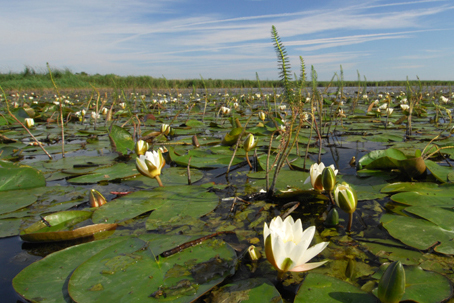Water quality
Restoring clear water and life to the lakes and rivers of the Broads is one of our fundamental aims.
 Years of research and experimental management have revealed what the waterways were like around a century ago with clear water and plenty of birds and aquatic plants.
Years of research and experimental management have revealed what the waterways were like around a century ago with clear water and plenty of birds and aquatic plants.
Since then increased numbers of people, boats and intensive agriculture have resulted in high levels of harmful nutrients and contaminants in the water.
Clear water now only occurs in about five of the 63 broads so, a Water Quality Partnership was established with the Environment Agency, Natural England, and other scientists and wetland experts to seek practical ways of repairing years of ecological decline.
The Water Quality Partnership was subsumed by the Broadland Catchment Partnership in 2013.
The Broadland Rivers Catchment Plan (2014) provides actions for land management and wastewater management to improve water quality and deliver multiple benefits including for flood risk reduction, wildlife habitat, and recreational access.
The plan is reviewed by the Steering Group and has been deemed as fit for purpose but will be reviewed in 2027 in line with the shared vision.
How you can help
With the help of both visitors and the people who live and work in the Broads we can improve our rivers and lakes.
Our environmentally friendly boating page gives more details about how you can help reduce the impact of your boating enjoyment on the Broads, including advice on reducing the effects of anti-fouling paint.
The Environment Agency is asking householders with septic tanks and package treatment plants to help reduce the amount of the nutrient phosphate entering the waterways. You can find out more in the Environment Agency's septic tanks leaflet

